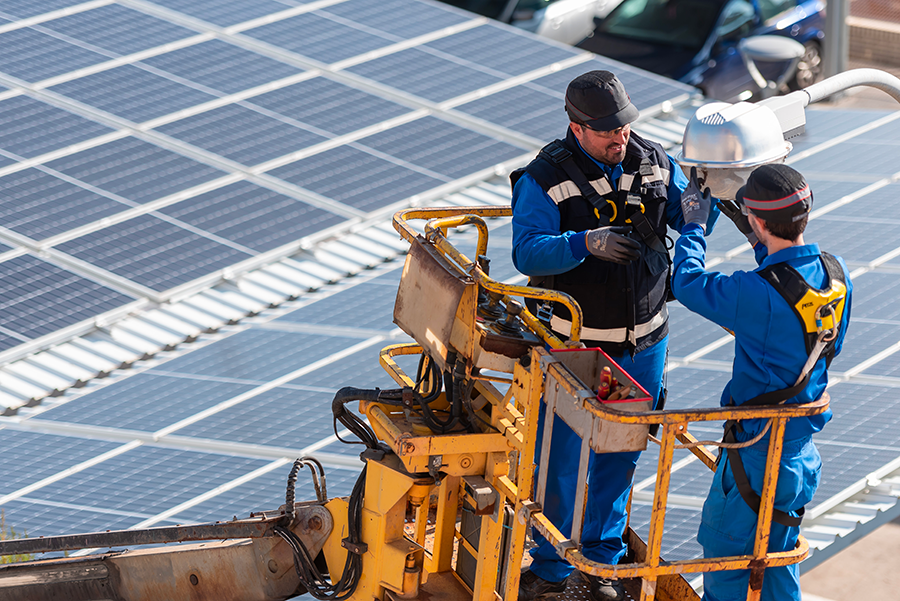We continue our series devoted to the challenges developed in our latest Integrated Annual Report (see below). After the supply chain, the world of work and the link between patients and digital, we are addressing the major question of climate change.
Today businesses are faced with a simple choice—adopt an earnest sustainable development strategy that is quantified and timescaled over the long-term… or compromise their very existence.
In December 2023, COP28 set aside a full day to discuss health, highlighting the relationship between climate change and human health. Just after, a historic declaration was signed by 123 countries calling for action with an integrated approach.
The climate crisis has brought on a vast range of problems, including heat stress, malnutrition, vector-borne diseases, respiratory conditions caused by air pollution, and anxiety. Not only is it threatening human health, but it is also jeopardizing the resilience of health care systems.
Climate change is also a challenge for the pharmaceutical industry, leading to disruption in supply chains and increased operating expenses. Therefore, companies must adapt and take action to ensure the ongoing availability of essential medications and mitigate the consequences for the ultimate beneficiaries – the patients.
Fighting climate change with innovation
Many companies in the pharmaceutical industry, which accounts for around 5% of global carbon emissions, have set ambitious objectives and meticulous low-carbon trajectories using science-based targets.
This transformation centers around green chemistry and ecodesign for medicine, as well as production processes that pollute less and use more sustainable ingredients. Efforts are made to minimize emissions all throughout the medicine life cycle by leveraging a range of solutions, such as optimized management of resources and raw materials, packaging and transport, etc.

Under the Spanish sun
670 photovoltaic modules were installed at the Toledo and Madrid facilities. Around 450,000 kWh is generated each year, which represents nearly 10% of their total electricity consumption. Implementing our road map to cut our carbon footprint, these two facilities are powered exclusively by renewable energy, as are Jacarepagua and Pharlab in Brazil and our research center in Budapest, Hungary.
Pharmaceutical companies are increasingly adopting renewable energy and eco-energy technologies and thus committing to reduce the dependence on fossil fuels and enhance energy efficiency.
Furthermore, as the majority of emissions fall within scope 3, pharmaceutical companies also strive to encourage their suppliers and service providers to adopt sustainable standards.
42%
This is our revamped target at Servier for 2030 to reduce our greenhouse gas emissions (scopes 1 & 21) compared to 2021/2022.
A winning bet
Not only do these initiatives protect companies’ business model, they also serve to attract talent that is increasingly focused on climate commitments.
In a world where the health of the planet and the health of individuals goes hand in hand, investing in sustainability is first and foremost about safeguarding our shared future.
Going further: At Servier, we are determined to make firm commitments to protect the planet
View from the field: “The Climate School training program has been rolled out to all Servier employees.”
Meet Antoine Poincaré / Director of the Axa Climate School. Antoine heads the Axa Climate School, which helps businesses train their employees on sustainable transition.
“My conviction is that ecological transition will make existing jobs “greener”. Everyone will need to understand how the environmental transition will change their profession, by acquiring green skills in existing roles: marketers, lawyers, buyers, or IT specialists. The prerequisite for anticipating these changes in the corporate world is training. Its primary goal is to enable all employees to acquire a general environmental culture (climate, biodiversity, resources) and to understand how their profession will evolve. This is what we are trying to do with our Climate School training offer, which Servier has deployed to all its employees.”

In a constantly changing world, Servier is adapting and flourishing. Our Integrated Annual Report 2022-2023 showcases this evolution, demonstrating how our company is responding in concrete ways to contemporary societal challenges.
Our Integrated Annual Report 2022-2023 is much more than a corporate document: it’s an invitation to explore our story, achievements and aspirations, in a concise and attractive format.
[1] Scope 1 emissions occur directly from sources that are controlled or owned by the Group.
Scope 2 emissions are associated with the purchase of electricity, steam, heat, or cooling.
